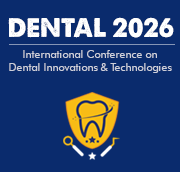Title : Software computer - assisted dynamic navigation, the road map for implant placement
Abstract:
Edentualism and the loss of function and aesthetics has been the most difficult field to operate in dentistry. “There is no higher replacement for natural teeth” being an authentic and realistic quote is slowly being replaced. Dental implants have replaced the natural teeth’s function and aesthetics in such higher levels. The discrepancies in angulation, depth and distance from adjacent teeth while placing implant, highly alters the outcome of the implant. According to Gallardo et al (2017) - the use of a static, computed tomography (CT)-generated guide stent with a coordinated system of specified drilling can result in less than 2 mm crestal and apical deviation from the plan and an angulation error of less than 5°; this time consuming method has been used previously used, but with less precision. The computer-assisted navigational surgery was first applied by Watanabe in 1987 in neurosurgical procedures. It allows direct access to specific targeted areas through smaller incisions, thus making surgery less invasive, reliable and reducing overall operation. Dynamic software navigation is used in implant placement using Cone beam computed tomography. The component consists of Localiser, Surgical Instrument and Imaging Data Set. Gargallo-Albiol et al (2019) has compared software dynamic navigation, static navigation and free hand implant placement and concluded in a systematic meta-analysis that except for increased cost, dynamic navigation is more advantageous in accuracy, precision and success of implants. This lecture will include basic understanding of Dynamic navigation components and working, followed by the literature data on accuracy and alterations.



